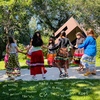This decommissioned ERA site remains active temporarily to support our final migration steps to https://ualberta.scholaris.ca, ERA's new home. All new collections and items, including Spring 2025 theses, are at that site. For assistance, please contact erahelp@ualberta.ca.
Search
Skip to Search Results- 16Campbell, Sandy
- 2Beaudreau, Diane, biologist, artist
- 2D'Souza, Amabel (banner creation)
- 1AALCO (Anglo American Leather Company) (Decorator)
- 1Brinston, Allyson
- 1Burger, Camille
- 12Research image
- 5Traditional food - Northern Canada
- 4Photographs
- 3Canada, Northwest Territories, Yellowknife
- 3Country food - Northern Canada
- 3Country food - Northern Canada - photographs
- 14Canadian Circumpolar Institute
- 14Images of Research Competition
- 13Canadian Circumpolar Institute/Circumpolar Digital Image Collection
- 4Images of Research Competition/Images of Research Competition 2023
- 3Images of Research Competition/Images of Research Competition 2019
- 2Tracking Change
-

2023-06-20
Submitted in the EDPS-537 (Indigenous Research Methodologies), the image is my digital land acknowledgment representing my positionality in Canada as an international student and guest on Indigenous lands. Each flipside has the same photograph of Edmonton's skyline taken near the River Lot 11
, Indigenous Art Park and maps of Edmonton* placed opposite to each other. The image reads and views differently when flipped upside down; one side represents the expression of the colonial experience of the Indigenous Peoples while the other side depicts Indigenous worldviews generated through word-clouds
based on the course readings and class assignments. The third part in the middle of the image represents the spaces of “Red Hope” *, and how ‘I’ interpret an Indigenist approach to research in relation to Indigenous Knowledge (IK) and Indigenous Research Methodologies (IRM) based on the course
-
2017-01-01
images of the sundial. The images represent the interpolation of the third space as each identifies an epistemological, political, ideological, aesthetic, ethical, and historical inquiry that challenges the content of our current curriculum to include authentic Indigenous pedagogy. The sundial represents
the methodological narrative in its 'temporal space' but as the story shifts through the sundial, it is ever changing and will do so as an ongoing element of nature, time, and place. My research will continue to explore this narrative from an Indigenous perspective drawn from my own experiences
revealed through poetic and artistic elements. The emergence of a new paradigm for Indigenous curriculum involves amalgamating the current system with new data points that are interconnected with Indigenous worldviews and allow resistance to assimilative epistemologies. // Program of Study: PhD // Faculty
-

2019-05-01
D'Souza, Amabel (banner creation)
Banner advertising on-site side event of the United Nations Permanent Forum on Indigenous Issues (UNPFII 18). The Tracking Change project was honoured to be selected as an official on-site side event as part of the Permanent Forum and hosted a 1.5 hour storytelling session in a talking circle
format featuring Indigenous community partners. The knowledge shared formed an interconnected story about the importance of freshwater ecosystems/fishing to Indigenous communities and fishing peoples and was livestreamed on UN Web TV.
-

2024-06-01
revitalization in action, part of a research project involving Indigenous youth in actively using their Indigenous languages. Through such community-based activities, this work aims to create immersive environments where language is taught and lived. The words scattered across the lower part of the image are
greetings in different Indigenous languages, illustrating the research's focus on everyday usage as a vehicle for learning. This approach emphasizes communication and connection within the community, fostering a natural and functional language acquisition. Documenting youth participation in language
underscores the essential role that younger generations play in the survival and thriving of Indigenous languages. The image shows how language revitalization efforts can engage young minds in the vital task of cultural preservation.
-

2019-04-01
D'Souza, Amabel (banner creation)
for discussion and action: Sustainability of Freshwater Ecosystems and Fishing Livelihoods for Indigenous Peoples; Addressing Climate Change Impacts on Freshwater Ecosystems and Indigenous Peoples; Addressing the Impacts of Resource Development on Freshwater Ecosystems and Indigenous Peoples; and
, Celebrating and Nurturing Indigenous Youth. The stage was then open for project participants to present their work and experience in a session called “Stories That Cross Borders”. The following themes were discussed: Methods for Tracking Change, Resource Development, Climate Change, Governance, and Youth


.jpg)
